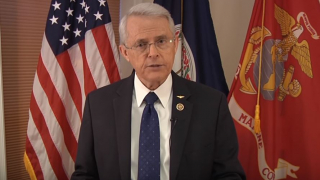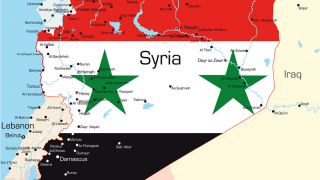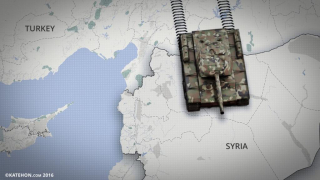Media-Spin and Pop-Culture
Information warfare is quickly becoming an integral part of modern conflicts. The modern digital media and the rapid development of information and communications technologies are creating a new playing field. This should be clear to everyone: political figures in decision-making positions, soldiers, and to the general public as well.
Information warfare is used in order to accomplish goals that would require serious military forces and the spilling of blood (for example, the annexation of part of a country) by other means. Victory and defeat occur in the consciousnesses of the warring parties. To send a message it is sometimes necessary to destroy houses, vehicles, civilian infrastructure, or innocent lives; however, the message alone, when well-developed and supported as necessary, is sometimes enough. The traditional military component shouldn’t be fully ignored, but it can take another role.1
But there are different methods to conduct information warfare. In the Cold War era, the West pushed anti-Soviet propaganda through the airwaves of its radio stations and through controlled mass media in other countries. From the 2000’s onward, an element of political communications called spin started to be actively used in the international arena. It has a whole spectrum of interpretations, like ‘twist’, ‘creating tales’, ‘spreading intrigue’, ‘patching holes’ etc. Spin specialists are called nothing less than spin doctors in the US and Great Britain. They are the kind of person that can make a ‘mountain out of a molehill’ and back again. In some cases, they dilute the initial meaning of an event, in others they change it to one more suitable to them, and in other cases they fire up the masses to achieve a certain effect. The most indicative representation of a spin doctor was provided by Robert de Niro in the Barry Levinson movie “Wag the Dog”.
As the author of a study on political communication, B. MacNairn, expressed himself, “journalism determines political reality” and the instrument of the mass media is used to correct the political strategy of certain parties and work on the collective conscious. Spin doctoring is mainly used in countries with old democratic traditions, i.e. the US and Great Britain.
It is there that the spin doctors diligently worked on the legitimation of the second invasion of Iraq as well as the ‘white washing’ of politicians that had gotten themselves involved in some kind of scandal. But globalisation does not stand idly by; this technology is surely starting to seep into other countries.
Of course, in the last few years Ukraine has become the subject of such spin doctoring. In this case, corporate mass media outlets are not just ‘curing’ the minds of Ukrainian citizens, but of the whole world as well.
It is enough to observe leading mass media outlets for a while and juxtapose their statements that are based on official Ukrainian sources with the sources themselves.
Spin doctors also create manipulations that are geared towards the creation of a positive images for processes that are backed by the US themselves. Such a case is the one of the short clip “I am a Ukrainian”, which we suggest the reader watch as part of the information war against Russia and as the work of Western structures that deal in strategic communications.
On the 10th of February 2014, a video appeared on the popular video sharing site YouTube in which a young, sympathetic girl from Ukraine told a story in English about the Ukrainian people’s battle against corruption. This was a student from the T. G. Shevchenko University of Kiev, Yulia Marushevskaya, who studied the Ukrainian language and its literature.
In her address, mentioned was also made of the communist past, the desire for a struggle to gain freedom, and a whole series of other postulates that, taken together, formed an entire message. What is more, she asked the viewers to spread the message, as she was afraid that the Internet and mobile services in Ukraine could be shut down and the world would not be able to gain any information. The two-minute video, as is said, went viral, and words of support streamed in from different countries.
However, was this story a spontaneous effort from a representative of the Ukrainian people that wanted to get the truth out? Very many different media outlets, bloggers, and activists were present on the Maidan; they recorded practically every day and gave their point of view from different positions. Why did precisely this video become a hit and why did it create a certain turning-point in public opinion, at least in the US?
The answer is, that even a superficial investigation does not lead to activists from local Ukrainian NGOs, but to US masters of manipulation and coups.
As it turned out, Stanford university professor Larry Diamond (who is a member of the powerful neoliberal Council for Foreign Affairs (CFR)) initiated the project, and the Ukrainian fragment is but a part of the documentary project “A Whisper to a Roar”, which is about the (American conception of) democracy’s march over the world. Diamond is directly linked to the National Endowment for Democracy (NED) foundation and the agency USAID, and has also taken part in the development of the “Arab Spring” together with Sharif Mansour from Freedom House and US National Security Council member Sharik Zaraf.2
The Ukrainian fragment (other countries that became the subjects of the spin doctors’ focus were Egypt, Malaysia, Venezuela, and Zimbabwe) was recorded by Ben Moses, a famous television journalist and (former) executive producer of the Washington office of the ABC news channel. This channel is part of the so-called big three and has a large share of American viewers. The film “A Whisper to a Roar” has a popular and scientific version and has been translated in several languages, including Russian.
Former US secretary of state Hillary Clinton unambiguously says in her review of the film, that “this film is not just a thrilling documentary, but a source of inspiration for people all over the world who are trying to make governments accountable to the citizens they service. The stories in “A Whisper to a Roar” demonstrate, that democracy is the product of enormous sacrifices, and that we are all responsible for securing its promise for future generations”.3 In other reviews it is written, that the film can serve as a means for action in places where a people is unhappy with its position. That is, the film is a kind of instruction for the execution of coups, just in a veiled way.
Ben Moses himself made himself out to be an innocent observer of the events in Kiev in an interview for the “Huffington Post”: “I was in Ukraine where I was preparing a movie about democracy, when the protests suddenly overshadowed everything. Hundreds of thousands of normal people filled the streets… When I was meeting people at protest actions, many of them had their families and children with them; and, while I was listening to their stories, I decided to try and do something, to tell others about what is really happening. This girl personifies the overwhelming majority of people on the streets of this country and speaks from the heart of the protest…”4
He is, of course, being sly. The fact that Moses was in Ukraine from December 2013 (which is supported by official documents) while the video aired in the middle of February 2014 is very telling. There was more than enough time for the preparation of the text, the study of the psychology of the local inhabitants, and the selection of an actress. The video turned out well. Even analysts of non-verbal communication started to pay attention to it as a piece of study material.
For example, doctor Jack Braun, who has dissected the video in detail, mentions that around 55 to 80% of all human communication is non-verbal, and, consequently, that the success of a message depends in many ways on correct facial expressions. He notes, that in this short video the emotions of revulsion, fear, sadness, and other feelings that are perceived on a subconscious level were included.5 As the facial expressions of the girl accompanied the text, it is not difficult to imagine that the task of the director and screenwriter who prepared the video was to put certain associations into the viewers’ heads. However, it is true that specialists have noted that such a package of emotions forced into a small message is practically impossible in real life.
By the way, Marushevskaya is married to the director of the Ukrainian news channel “24”, Markian Protsiv, which is why it wasn’t difficult for Moses to pick a good actress.
After the emergence of the video, the actress was immediately invited to participated in one CNN programme together with a presenter of a non-traditional sexual orientation, Anderson Cooper. This is yet another propaganda and disinformation specialist, who was active in the creation of the film Kony 2012 that was dedicated to Ugandan Lord’s Resistance Army leader Joseph Kony. The film itself was considered by specialists to be primitive propaganda and manipulation of public opinion that was meant to provide a basis for a US military intervention in Africa. It is possible that the intervention could have taken place; however, one of the film’s directors spoke out about cases of wilful forgery during the film’s production, which led to a public scandal. A similar confusion surrounding Anderson Cooper also took place after the fake story of the Syrian student Danny, who told of the “Assad army’s atrocities” in Syria. This time, the actor didn’t even manage to lie properly, and the deception was quickly discovered.6
By the way, actress Yulia Marushevskaya went to a Harvard University summer school and later a short internship at Stanford University after the clip was shot.
But her career was just beginning. However, it began neither in the area of the Ukrainian language nor in cinema. Instead, in October 2015 she was made the head of the Odessa customs office. It is known that Petro Poroshenko declared her accession to the post two days before the end of the application period. Ukrainian politicians have learned the lessons of lobbyism well from their American superiors.
Of course, it is not just TV and small propaganda movies that are spread through social media that are used as a weapon in informational-psychological warfare. The cinematographer as such is a most powerful instrument of influence, as he can create both an illusory reality as well as an ideological message.
Because film stars are often the subject of imitation by the masses, the engagement of actors in political projects has become an entirely routine practice of Washington’s foreign policy.
For example, Angelina Jolie, who is a UN goodwill ambassador and CFR member, has actively used her image of a film star and social activist to promote the US/NATO “Responsibility to Protect” doctrine. She focussed the propaganda of the war around the idea of ‘humanitarian intervention’ during an interview to the Balkan branch of Al-Jazeera for the promotion of her movie “In the Land of Blood and Honey”.
Jolie’s directorial debut took place in Sarajevo in 2012, and the movie itself was directed towards the justification of NATO’s harsh massacre in Bosnia in the 1990’s and included a clear subtext about the Syrian conflict.
She made a point of the inaction of the “international community” and said, that “Syria has, sadly, reached a point where some intervention is absolutely necessary…”. This is paradoxical, because, as she is a UN goodwill ambassador, she has made declarations that contradict that organisation’s charter.
“The use of veto rights in questions of humanitarian intervention should be questioned” – she said, while having in mind that the opinions of Russia and China cannot be taken seriously.7
The Jolie case is not unique. As Rebecca Keegan writes in the “Los Angeles Times”8, during many decades the relations between Hollywood and the military served the needs of both sides: cinematographers received access to equipment, locations, personnel, and information that gave their productions an element of realism, while the armed forces received some measure of control over the end product.
This is not just important for recruiting, but also for the management of the conduct of modern armies, as well as a form of appeal to US taxpayers, who eventually foot the bill. If we take into account, that less than 1% of the US population is currently serving in the army, entertainment (including films, TV shows, and videogames) are key to forming society’s ideas of what a soldier is.
“Hollywood’s movies serve as the most important in the US and present conclusions that are useful for the military” – says Lawrence Suid, author of the book “Guts and Glory: The Making of the American Military Image in Film.” According to him, “Americans love violence, and war movies secure a maximum of violence without any danger.” It is telling, that an unspoken rule exists in Hollywood: do not criticise US foreign policy if the US Department of State has not agreed to it. Actors trying to tell the truth about various problems that the US were the source of have become banished and don’t receive any contracts.
But, as Jean Baudrillard has said, “whatever the case may be, whatever anyone thinks about the haughtiness of the dollar or the corporations, thanks to its insane conviction that it realises all myths, US culture is attractive to the entire world and even for those that it causes suffering to.”9
1 Ulrik Franke, War by non-military means, FOI, March 2015, Р. 9.
2 The CIA Role in the Arab Spring. January 18, 2014 http://stuartjeannebramhall.com/tag/open-society-institute/
4 Deborah Stambler. I Am a Ukrainian: Can You Be Viral and Anonymous? 02/14/2014. http://www.huffingtonpost.com/deborah-stambler/i-am-a-ukrainian-can-you-_b_4781793.html
6 Paul Joseph Watson. ‘Syria Danny’ Caught Staging CNN War Propaganda Stunt. March 6, 2012
http://www.infowars.com/syria-danny-caught-staging-cnn-war-propaganda-stunt/
7 Angelina Jolie Conscripted To Sell Genocidal ‘Humanitarian Intervention’ War Doctrine, 24 FEBRUARY 2012
8 Rebecca Keegan, The U.S. military's Hollywood connection // Los Angeles Times, August 21, 2011
http://articles.latimes.com/2011/aug/21/entertainment/la-ca-military-movies-20110821
9 Ж. Бодрийяр. Америка. - СПб.: Владимир Даль, 2000. С. 151.
Translated from Russian by V.A.V.













